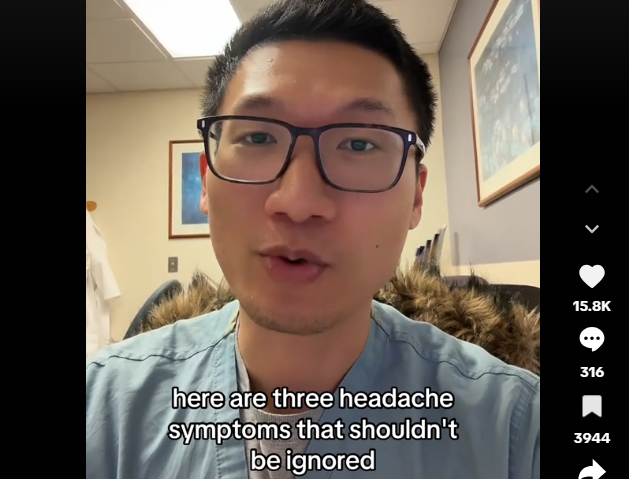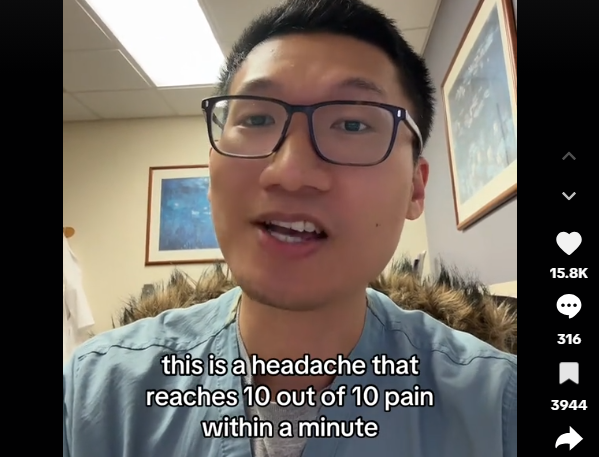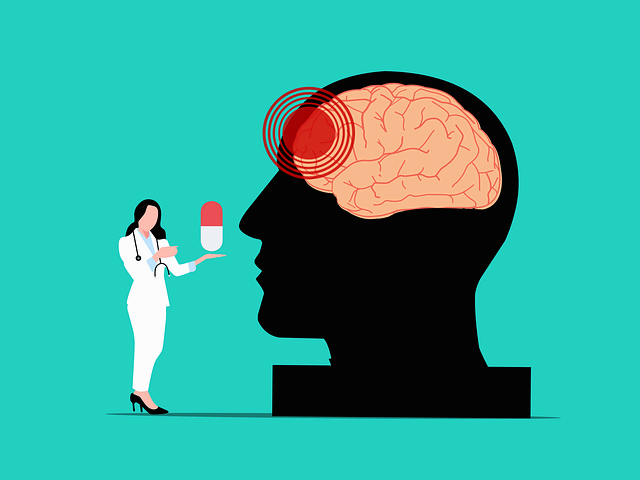Neurologist Dr. Baibing Chen recently described a headache people should never ignore on social media. Known as thunderclap headaches, he warned that these severe headaches could indicate underlying conditions such as an aneurysm or brain tumor. Since brain diseases increase with age, individuals over 50 need to be particularly vigilant. The appearance of symptoms accompanying the headache, such as pain when chewing, scalp tenderness, and vision changes, should be taken seriously.
Symptoms of a Thunderclap Headache

The symptoms associated with these severe headaches are the same, no matter their cause. Thunderclap headaches hit very quickly, reaching their most painful point in 30 to 60 seconds. They are typically accompanied by vomiting, nausea, pain anywhere in the head or neck, fainting, and feeling like it’s the most severe headache you have ever experienced. Sometimes these symptoms are triggered by certain activities, other times they seem to come from nowhere at all. Certain individuals also experience these severe headaches after sexual activity. Sometimes the pain will start to subside around an hour after the peak. For some people, though, the pain lasts for a week or more.
What Causes These Severe Headaches?

Thunderclap headaches are often a symptom of bleeding in the brain, otherwise known as a subarachnoid hemorrhage. This is a serious health issue that can be life-threatening if left untreated. Subarachnoid hemorrhages are typically caused by ruptured brain aneurysms. Other potentially life-threatening causes include ischemic and hemorrhagic stroke, vasculitis, mild to moderate head injury, and a blocked blood vessel. However, a proper diagnosis can only be made once a physician has ruled out all other possible causes.
Read More: 10 Warning Signs Your Headache Could Be Dangerous
Secondary Causes and Signs

Sleepiness or neck stiffness could suggest infection or a ruptured brain aneurysm. If the patient has a drooping eyelid, it could be the result of a carotid artery tear. Clots in a blood vessel could result in sudden limb weakness or seizures. However, an absence of these symptoms does not rule out these causes. Therefore, you will first be examined when arriving at the hospital.
The Treatment Of Thunderclap Headaches

A doctor can only treat a patient once a diagnosis has been made to determine the cause of the headaches. A doctor may require that the patient undergo various tests, such as CT scans, MRI scans, MRA scans, or a lumbar puncture. There are multiple treatments available, and a physician will pick one based on the cause of your thunderclap headaches. Treatments vary from surgery to repair a blockage to blood pressure control and pain medications. There are also several other options available that are specific to the causes. Since these severe headaches can be potentially life-threatening, health practitioners suggest that you seek medical help as soon as you start experiencing any symptoms.
Primary Thunderclap Headaches

There are certain cases where no physical causes can be identified, known as idiopathic benign recurrent headache disorder. Primary TCH is typically more prevalent among young adults. It is usually linked to physical triggers such as sexual activity, exercise, and coughing. Occasionally, some individuals experience several recurrent TCHs over a few days. In these instances, imaging often reveals dilation and narrowing in alternating areas of brain arteries. This is known as reversible cerebral vasoconstriction syndrome, or RCVS. Around 30% to 50% of RCVS patients eventually develop brain swelling, strokes, or brain hemorrhaging. People diagnosed with RVCS are typically admitted to the hospital for a few days so they can be kept under medical observation.
The Bottom Line

Primary TCH can sometimes recur over a period of several years. However, recurrent RCVS episodes are far less common. The majority of people are able to gradually resume their usual physical activities around two to four weeks after the thunderclap headaches have subsided. While the long-term outcome for TCH and RCVS is almost always benign, it is always crucial to be diagnosed to reveal any potential secondary causes. Considering that these severe headaches can prove life-threatening if the cause is not found, seeing a doctor is vital.
Read More: Research Uncovers Nearly 5-Fold Jump in Hospitalizations for Common Cause of Stroke

